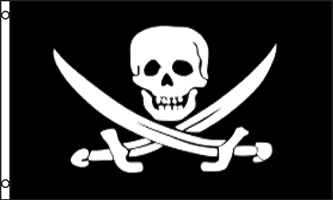The Story
The Story
The Story
The History
Where it all happened

In 1333, Kinsale was established as a town under a charter granted by King Edward of England. Through its history, Kinsale has been an important link with Spain. Charles Fort, built in 1677, guarded the entrance to Kinsale Harbor. From 1694, Kinsale served as a supply base for the English Royal Navy. Captain Woodes Rogers mentions Kinsale in his 1798 memoirs. He became Governor of Nassau and was an important player in Anne Bonny's life. (Wikipedia)
The Pink House was an important grogerie in Anne Bonny's history because it is where she met James Bonny. The picture on the right was the way the Pink House looked in Anne Bonny's day. The Pink House was built in 1694. The picture on the left is how The pink House looks today. Located at 17 Chalmers Street in downtown Charleston. (Wikipedia)


Nassau, founded in 1670 as Charles Town, was burned in 1684. It was rebuilt in 1695 and renamed Nassau. From 1703 to 1713, with no Royal Governor, Nassau became the bastion of pirates. During these years, Nassau was called the "Pirate Republic". In 1718, Captain Woodes Rogers was appointed Royal Governor. He was to regain control for the British Crown. He clamped down on piracy and published the Proclamation naming Anne Bonny, John Rackham et al "As Pirates". (wikipedia)
On September 15th 1720, Governor Woodes Rogers signed a Proclamation naming John Rackham, Anne Bonny, Mary Reed and the rest of his crew as Pirates and Enemies of the Crown of Great Britain. And, so are to be treated and deem'd by all of His Majesty's subjects. He had previously condemned all pirates to death.
(Wikipedia)


Port Royal, Jamaica, had been the port of choice of the Caribbean pirates. It was closed by the Governor. The selection of Nassau was made because there was no Royal Governor. Nassau's location was better suited to pirating. The Straits of Florida was the main route for ships laden with gold and sugar from Mexico, Jamaica, and Cuba to Europe and returning ships with supplies. It was also the route used by slaver ships bringing slaves to the sugar plantations. (Wikipedia)
Christopher Columbus was the first European to set foot on the Island of Jamaica in 1494, when he claimed it for Spain. His return in 1503 was the result of a ship wreck. He and his crew lived there for a few months until they were rescued. In 1655, Britain was successful in taking Jamaica from Spain but, the pirates were using the harbor to be called Port Royal as headquarters for a number of years before the English takeover. Port Royal had earned the reputation as the "wickedest place on Earth". The 1692 earthquake virtually devastated Port Royal causing the relocation of the pirates that utilized it as headquarters.
They moved to Nassau. (Wikipedia)


Cuba was one of "Calico Jack" Rackham's favorite places to pirate and relax. Anne Bonny's first child was born in Cuba while staying with friends of Rackham. He knew that there were many small, deep harbors and little official presence by the police or military. Christopher Columbus landed on the northeastern coast, October 28, 1492 and claimed the island for Spain.
This is a mariners map of Anne Bonny's world in 1720. As you can see Nassau, The Bahamas, Cuba, Jamaica, and Espaniola (now Haiti & Dominican Republic) are pretty much correctly drawn because they were well traveled. North, Central, and South America are mostly guesses because they were yet to be actually mapped.

.jpg)
John "Calico Jack" Rackham, Anne Bonny and their crew were captured by Jonathan Barnet in Dry Harbor Bay, Jamaica, near Ocho Rios on October 21, 1721. The crew had been drinking the entire day and most were below deck sleeping. Anne Bonny and Mary Reed were on guard. Barnett's crew were too much for Anne and Mary. As Jack and his crew were herded, passing the two women, Anne Bonny was heard saying to Rackham, "if you had fought like a man you need not have hanged like a dog".
1) "Calico Jack" Rackham and his senior crew were tried in Villa de la Vega and were found guilty of being pirates. They were taken, in an open wagon so they could be viewed, to Port Royal Harbor
2) where they were hanged in a public execution November 18, 1721.
3) Following his death, Rackham's body was gibbeted and put on display, on a small islet at the main entrance to Port Royal Harbor. It is now known as Rackham's Cay.
(Wikipedia)


Anne Bonny and Mary Reed were tried on November 17, 1721 by the Governor of Jamaica, Sir Nicholas Lawes (Anne Bonny had struck his sister) in the town of Villa de la Vega (also called Spanish Town) as pirates and found guilty. The verdict was "you are to go...to the place of execution...where you shall be hanged by the neck until dead..." Both Anne Bonny and Mary Reed escaped by "pleading their bellies" as they were both pregnant and such could not be hanged in Jamaica.
Gibbeting refers to the use of a metal cage from which the dead bodies of criminals were hung on public display to deter other existing or potential criminals. It was most often used for traitors, murderers, highwaymen and pirates. Rackham's body was Gibbeted and placed at the main entrance of the busy harbor of Port Royal as a reminder to "would be" pirates. (Wikipedia)


The famous Skull and crossed swords was designed by John "Calico Jack" Rackham. It was different from previous designed Skull and crossed bones because Rackham wanted to send a message to ships he was commandeering that if they didn't surrender all would be killed.